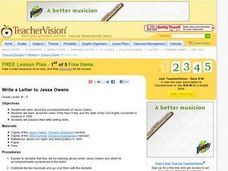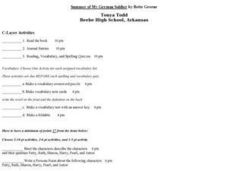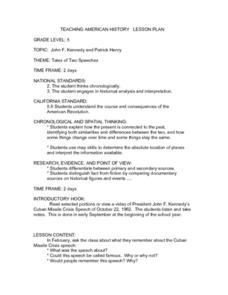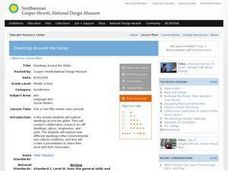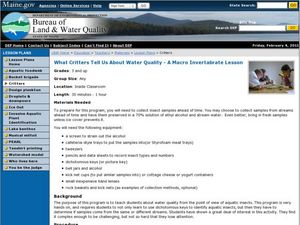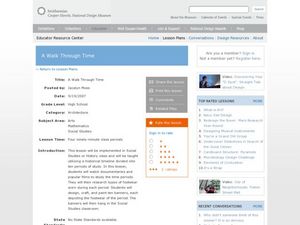Curated OER
Write a Letter to Jesse Owens
Learners examine the accomplishments of Jesse Owens and the views of the Nazi Party in 1936. They read and discuss two handouts, conduct research on the Nazi Party's views and the Civil Rights Movement in American in 1936, and write a...
Curated OER
The Economy and Politics
For this economy and politics sociology worksheet, students complete 14 fill in the blank questions and 7 multiple choice questions regarding the how businesses operate in different economies and under various political control.
Curated OER
Is Seeing Believing?
Pupils study different photographers who started the concept of battlefield photography. In this media lesson students explore how to "read" a photograph and relate the use of photography during the Civil War to current use...
Curated OER
Summarizing Political Cartoons by Using Standard Parts of Speech
Students analyze a political cartoon, and at the same time cover the basic parts of speech, in order to view a cartoon and determine its subject, action verb, and object.
Curated OER
Applied Science - Built Environment Post Lab (Energy)
Young scholars study science. In this efficiency lesson, students explore different forms of energy and compare them to determine which works the best. They work independently to create a collage of different energy sources (using...
Curated OER
Summer of My German Soldier
Students participate in a layered curriculum unit for a novel study. The teaching method allows for a student centered classroom that includes different methods of instruction and assessment.
Curated OER
Tale of Two Speeches
Students view and read portions of John F. Kennedy's Cuban Missile Crisis speech from October 22, 1962. Later in the year, students recall what they remember about the speech and use a Venn Diagram to compare it to Patrick Henry's...
Curated OER
COMPARING BUDDHISM AND CONFUCIANISM
Students conduct research into the two largest religions of Asia that are Buddhism and Confucianism. They set out to find the similarities and differences with the help of a graphic organizer.
Curated OER
Which Herp Is Which?
Students research different kinds of herps. The teacher gives the student a particular herp and the student writes a postcard (as the herp) to an in-class penpal, giving hints about the herp, but not identifying itself.
Curated OER
Halloween Candy Sort
Students use their Halloween candy to practice sorting and classifying. They compete a Venn diagram comparing their candy wrappers. They develop ways as a class to catorgize the candy in different ways.
Curated OER
Waddle You Know About Penguins
Second graders study the similarities and differences of the seventeen species of penguins. They investigate habitats and how these habitats are suited to each species characteristics. They see how animals adapt to their environments.
Curated OER
Tradition through storytelling and music
Young scholars discover how storytelling can shape a person's tradition.Students examine different methods of storytelling such as music, biographies, and African folktales. They then demonstrate their knowledge of storytelling by...
Curated OER
Dwellings Around the Globe
Young scholars explore dwellings around the globe and conduct collaborative research on cliff dwellings, igloos, longhouses, and yurts. They then explore how different dwellings reflect environmental and cultural conditions, and they...
Curated OER
What Critters Tell Us About Water Quality: A Macroinvertebrate Lesson
Learners explore our ecosystem by investigating the quality of our water. In this aquatic insect instructional activity, students examine a group of random insects collected from different streams and ponds in the area. Learners record...
Curated OER
Patriotic Slaves
Eleventh graders listen to a song and read the lyrics and discuss what patriotism means to them. After viewing pictures of important patriots throughout history, they describe their contribution to society. They write in their journals...
Curated OER
A Walk Through Time
Students investigate the types of footwear worn during ten periods of history. In this secondary, art/math/social studies lesson, students view documentaries and popular films to study the time periods. Students research the...


